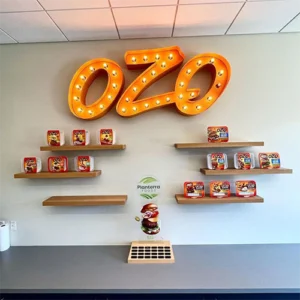Easy peasy!
The sign permitting process can seem daunting, but it doesn’t have to be! Whether you’re a small business owner looking to put up a sign for the first time or an experienced sign professional, understanding the basics of the permitting process can help ensure that your sign project goes smoothly.
First things first.
It’s important to note that the sign permitting process can vary depending on where you’re located. Each city and state has their own set of regulations and requirements for signs, so it’s important to check with your local government to find out what applies to you. However, there are some commonalities across most jurisdictions.
One of the most important things to know is that many signs will require a permit before they can be installed. This may include signs on buildings, on the side of the road, or even in a window. Some of the key factors that will be considered when reviewing a permit application include the size of the sign, the location of the sign, and the type of sign. For example, a large illuminated sign on a building may require a different permit than a small, non-illuminated sign in a window.
When applying for a permit, you’ll typically need to provide certain information and documents, such as a detailed sign design, measurements of the sign, and proof of property ownership. You’ll also need to pay any applicable permit fees. Once your application is submitted, it will be reviewed by the appropriate government agency, who may have comments or revisions. Once your application is approved, you’ll be issued a permit which will allow you to install your sign.
Zoning + Landlord Design Guidelines
One important aspect of the permitting process is that you should make sure that the design of your sign conforms with the local codes and regulations. Such as the maximum allowable sign area, height, and illumination restrictions. And also the zoning of the area you will put up the sign, some areas doesn’t allow certain types of signs. You can check this with the local planning department.
Another important thing to keep in mind is that after your sign is installed, it may be subject to inspection. This is done to ensure that the sign has been installed in accordance with the permit and that it meets all safety and code requirements.
Even though the permitting process can seem a bit overwhelming, it’s ultimately in place to ensure that the signs in our communities are safe and meet certain standards. By working with your local government and following the rules, you can ensure that your sign project goes smoothly and that you’re able to get your message out there to your customers.
To sum it up, the sign permitting process is a way to make sure that signs are safe, conform with local regulations and meet the standards. But don’t be overwhelmed with it, you can work through it with the help of the local government and be sure to have all the information and documents ready before starting your application process.




